Permaculture companion plants for Western Hemlock
| Image | Name | Data | Description | Actions |
|---|---|---|---|---|
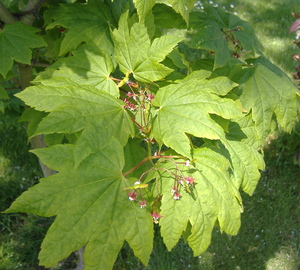
|
Vine Maple |
https://en.wikipedia.org/wiki/Acer_circinatum
true
Slow
Moist
Full sun, Partial sun/shade
6-9
Trees
Light (sandy), Medium, Heavy (clay)
Aceraceae
12.0
Sap
https://pfaf.org/User/Plant.aspx?LatinName=Acer circinatum
Alaska, British Columbia, California, Oregon, Washington
https://powo.science.kew.org/taxon/urn:lsid:ipni.org:names:317375-2
Sweetener
Weaving material, Fire starter, Paint, Preservative, Lumber
|
Show
Edit |
|

|
Oregon Grape |
https://en.wikipedia.org/wiki/Mahonia_nervosa
true
Slow
Dry, Moist
Full sun, Partial sun/shade, Full shade
5-9
Shrubs
Cascade barberry
Light (sandy), Medium, Heavy (clay)
Berberidaceae
0.6
Fruit, Leaves
https://pfaf.org/User/Plant.aspx?LatinName=Mahonia nervosa
British Columbia, California, Idaho, Oregon, Washington
Berberis nervosa
https://powo.science.kew.org/taxon/urn:lsid:ipni.org:names:31492-2
https://powo.science.kew.org/taxon/urn:lsid:ipni.org:names:1077279-2
Dye, Ground cover
|
Show
Edit |
|
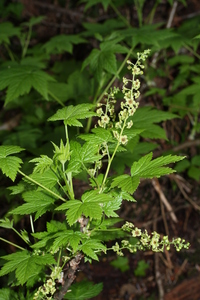
|
Stink Currant |
Fruit
Shrubs
6-9
Full sun, Partial sun/shade
Moist
Light (sandy), Medium, Heavy (clay)
2.5
https://en.wikipedia.org/wiki/Ribes_bracteosum
Grossulariaceae
https://pfaf.org/User/Plant.aspx?LatinName=Ribes bracteosum
Western North America, Alaska, British Columbia, California, Oregon, Washington
Seed - direct sow, Cuttings
mid summer
Perennial
Deciduous
https://powo.science.kew.org/taxon/urn:lsid:ipni.org:names:30289786-2
1.5
Crafting
true
|
[Ribes bracteosum @ Temperate Plants Database, Ken Fern](http://temperate.theferns.info/viewtropical.php?id=Ribes+bracteosum) #### Propagation - direct sow Sow seed as soon as fruit is ripe in the autumn. Sow with protection from pests. Requires 3 months of cold stratification at 2-5°C. Sow as early as possible. #### Propagation - cuttings Take cuttings of half-ripe wood, 10-15cm long in mid summer. |
Show
Edit |
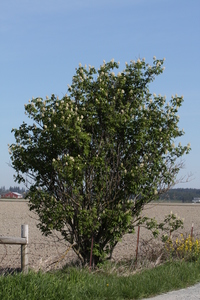
|
Sambucus racemosa |
https://en.wikipedia.org/wiki/Sambucus_racemosa
true
Medium
Moist
Full sun, Partial sun/shade
3-7
Shrubs
Red elderberry, rocky mountain elder, european red elderberry, american red elder
Light (sandy), Medium, Heavy (clay)
Caprifoliaceae
3.0
Flowers, Fruit
https://pfaf.org/User/Plant.aspx?LatinName=Sambucus racemosa
2.3
Alaska, Albania, Alberta, Aleutian Is., Arizona, Austria, Baltic States, Belarus, Belgium, British Columbia, Bulgaria, California, Central European Rus, Colorado, Connecticut, Czechoslovakia, East European Russia, France, Georgia, Germany, Greece, Hungary, Idaho, Illinois, Indiana, Iowa, Italy, Kentucky, Labrador, Maine, Manitoba, Maryland, Massachusetts, Michigan, Minnesota, Missouri, Montana, Netherlands, Nevada, New Brunswick, New Hampshire, New Jersey, New Mexico, New York, Newfoundland, North Carolina, North Caucasus, North Dakota, Nova Scotia, Ohio, Ontario, Oregon, Pennsylvania, Poland, Prince Edward I., Québec, Rhode I., Romania, Saskatchewan, South Dakota, South European Russi, Spain, Switzerland, Tennessee, Ukraine, Utah, Vermont, Virginia, Washington, West Virginia, Wisconsin, Wyoming, Yugoslavia, Yukon
Bolivia, Denmark, Finland, Great Britain, Kazakhstan, Norway, Sweden
https://powo.science.kew.org/taxon/urn:lsid:ipni.org:names:30056767-2
textiles, Lumber, Fragrance
|
Show
Edit |
|
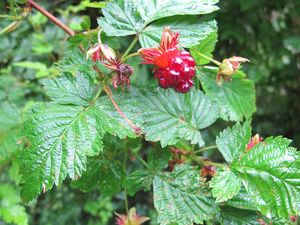
|
Salmonberry |
https://en.wikipedia.org/wiki/Rubus_spectabilis
true
Medium
Moist
Full sun, Partial sun/shade
4-8
Shrubs
Light (sandy), Medium, Heavy (clay)
Rosaceae
1.8
Forest edges
Flowers, Fruit, Shoots, Stem
Disinfectant, Dye, Poles
Perennial
https://pfaf.org/User/Plant.aspx?LatinName=Rubus spectabilis
Alaska, British Columbia, California, Idaho, Oregon, Washington
Belgium, Germany, Great Britain, Ireland, Netherlands, Norway, Sweden
https://powo.science.kew.org/taxon/urn:lsid:ipni.org:names:223579-2
Tea
|
Rubus spectabilis is a shrub growing to 1–4 m (40–160 inches or 1.3–13.3 feet) tall, with perennial, not biennial woody stems that are covered with fine prickles. The leaves are trifoliate (with three leaflets), 7–22 cm (2.8–8.8 inches) long, the terminal leaflet larger than the two side leaflets. The leaf margins are toothed. The flowers are 2–3 cm (0.8–1.2 inches) in diameter, with five pinkish-purple petals; they are produced from early spring to early summer. The berries ripen from early May to late July in most of the Pacific Northwest (later in cooler climates), and resembles a large shiny yellow to orange-red blackberry 1.5–2 cm (0.6–0.8 inches) long with many drupelets. These are eaten by many birds and other animals. |
Show
Edit |

|
Alaska Blueberry |
Moist
Full sun, Partial sun/shade
Light (sandy), Medium
Ericaceae
1.8
Shrubs
https://pfaf.org/User/Plant.aspx?LatinName=Vaccinium alaskaense
Alaska, Alberta, Aleutian Is., British Columbia, Idaho, Japan, Kamchatka, Khabarovsk, Kuril Is., Labrador, Michigan, Newfoundland, Nova Scotia, Ontario, Oregon, Québec, Sakhalin, South Dakota, Washington, Yukon
Vaccinium ovalifolium var. ovalifolium
https://powo.science.kew.org/taxon/urn:lsid:ipni.org:names:77225604-1
https://powo.science.kew.org/taxon/urn:lsid:ipni.org:names:261771-2
|
Show
Edit |
|

|
Mountain Huckleberry |
https://en.wikipedia.org/wiki/Vaccinium_membranaceum
true
Moist
Full sun, Partial sun/shade
5-9
Shrubs
Thinleaf huckleberry, mountain bilberry, mountain huckleberry, tall huckleberry, twin-leafed huckleberry, big whortleberry, velvet-leaf huckleberry, globe huckleberry, thin leafed blueberry
Light (sandy), Medium
Ericaceae
1.0
Fruit
https://pfaf.org/User/Plant.aspx?LatinName=Vaccinium membranaceum
Alberta, Arizona, British Columbia, California, Colorado, Idaho, Michigan, Montana, Ontario, Oregon, South Dakota, Utah, Washington, Wyoming
https://powo.science.kew.org/taxon/urn:lsid:ipni.org:names:859019-1
|
Show
Edit |
|
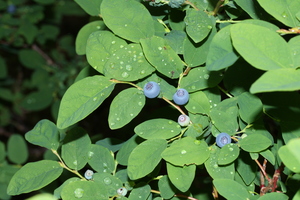
|
Black Huckleberry |
3-7
Full sun, Partial sun/shade
Moist
Light (sandy), Medium
3.0
Shrubs
true
Fruit
https://en.wikipedia.org/wiki/Vaccinium_ovalifolium
Oval-leaf blueberry
Ericaceae
https://pfaf.org/User/Plant.aspx?LatinName=Vaccinium ovalifolium
Alaska, Alberta, Aleutian Is., British Columbia, Idaho, Japan, Kamchatka, Khabarovsk, Kuril Is., Labrador, Michigan, Newfoundland, Nova Scotia, Ontario, Oregon, Québec, Sakhalin, South Dakota, Washington, Yukon
https://powo.science.kew.org/taxon/urn:lsid:ipni.org:names:317273-2
|
Black Huckleberry (Vaccinium ovalifolium) is a shrub that is native to the Pacific Northwest region of North America, including parts of Canada and the United States. It typically grows to be between 1 and 3 feet tall and has oval-shaped leaves that are dark green in color. The shrub has small, bell-shaped flowers that are white or pink in color, and its fruit is a small, dark purple or black berry. Black Huckleberry prefers to grow in partial shade to full sun, and it prefers well-drained, acidic soils. To cultivate the plant successfully, a grower may need to provide it with regular watering and mulch around the base of the plant to help retain moisture. Black Huckleberry is winter hardy and can tolerate cold temperatures. The berries of Black Huckleberry are edible and can be eaten fresh off the plant or cooked into jams, jellies, and pies. The berries can also be dried and stored for later use. In addition to its use as a food source, Black Huckleberry has been used for medicinal purposes by Native American tribes. The plant has also been used as a natural dye and has value for wildlife, as the berries are a food source for birds and other animals. |
Show
Edit |

|
Evergreen Huckleberry |
https://en.wikipedia.org/wiki/Vaccinium_ovatum
true
Slow
Dry, Moist
Full sun, Partial sun/shade
3-7
Shrubs
Florist's huckleberry, shot huckleberry, californian huckleberry
Light (sandy), Medium
Ericaceae
2.5
Fruit
https://pfaf.org/User/Plant.aspx?LatinName=Vaccinium ovatum
British Columbia, California, Oregon, Washington
https://powo.science.kew.org/taxon/urn:lsid:ipni.org:names:317276-2
Tea
|
Show
Edit |
|
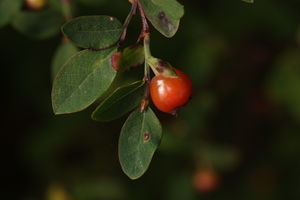
|
Vaccinium parvifolium |
https://en.wikipedia.org/wiki/Vaccinium_parvifolium
true
Moist
Full sun, Partial sun/shade
5-9
Shrubs
Red huckleberry, red bilberry, red whortleberry
Light (sandy), Medium
Ericaceae
1.8
Crafting
Fruit
Perennial
https://pfaf.org/User/Plant.aspx?LatinName=Vaccinium parvifolium
Alaska, British Columbia, California, Oregon, Washington
https://powo.science.kew.org/taxon/urn:lsid:ipni.org:names:317275-2
1
Tea
|
Vaccinium parvifolium, the red huckleberry, is a species of Vaccinium native to western North America, where it is common in forests from southeastern Alaska and British Columbia south through western Washington and Oregon to central California. In the Oregon Coast Range, it is the most common Vaccinium. It occurs mostly at low to middle elevations in soil enriched by decaying wood and on rotten logs, from sea level up to 1,820-metre (6,000 ft). It is a deciduous shrub growing to 4-metre (13 ft) tall with bright green shoots with an angular cross-section. The leaves are ovate to oblong-elliptic, 9-millimetre (0.35 in) to 30-millimetre (1.2 in) long, and 4-millimetre (0.16 in) to 16-millimetre (0.63 in) wide, with an entire margin. The flowers are yellow-white to pinkish-white with pink, decumbent bell-shaped 4-millimetre (0.16 in) to 5-millimetre (0.20 in) long. The fruit is an edible red to orange berry 6-millimetre (0.24 in) to 10-millimetre (0.39 in) in diameter. |
Show
Edit |
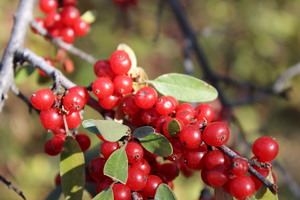
|
Buffalo Berry |
2-6
Full sun, Partial sun/shade
Dry, Moist
Light (sandy), Medium, Heavy (clay)
2.5
Shrubs
Medium
true
Fruit
Russet buffaloberry, canada buffaloberry, soopolallie
Elaeagnaceae
Alaska, Alberta, Arizona, British Columbia, California, Colorado, Idaho, Illinois, Indiana, Iowa, Labrador, Maine, Manitoba, Michigan, Minnesota, Montana, Nevada, New Brunswick, New Mexico, New York, Newfoundland, North Dakota, Northwest Territorie, Nova Scotia, Nunavut, Ohio, Ontario, Oregon, Pennsylvania, Québec, Saskatchewan, South Dakota, Utah, Washington, Wisconsin, Wyoming, Yukon
Vermont
https://en.wikipedia.org/wiki/Shepherdia_canadensis
https://pfaf.org/User/Plant.aspx?LatinName=Shepherdia canadensis
https://powo.science.kew.org/taxon/urn:lsid:ipni.org:names:323864-1
Yes
None
|
Buffaloberry is a unique and hardy shrub native to North America, particularly prevalent in the northern United States and Canada. It is notable for its ability to thrive in challenging environments, including poor and alkaline soils, and its remarkable nitrogen-fixing capability, which enhances soil fertility. Buffaloberry plants can grow up to 6 to 18 feet tall, depending on the conditions. It has separate male and female plants, with only the female plants producing fruit. The berries are small, bright red or sometimes yellow, and have a tart, somewhat bitter taste when raw. They are rich in lycopene, an antioxidant, and become sweeter and more palatable after a frost. Buffaloberry is highly valued in permaculture and ecological restoration projects for its nitrogen-fixing ability, which enriches the soil, making it an excellent choice for rehabilitating degraded lands. The berries are an important food source for various wildlife, including birds and bears. In some Native American cultures, buffaloberries hold significant value. The fruits have been traditionally harvested for food and medicinal purposes. They are used in various dishes, including soups and stews, and are sometimes made into jellies and preserves. |
Show
Edit |

|
Alnus sinuata |
true
Fast
Moist, Wet
Full sun, Partial sun/shade
2-9
Shrubs
Medium, Heavy (clay)
Betulaceae
4.0
Flowers
https://pfaf.org/User/Plant.aspx?LatinName=Alnus sinuata
Alaska, Alberta, Aleutian Is., British Columbia, California, China North-Central, Colorado, Idaho, Japan, Kamchatka, Khabarovsk, Kuril Is., Magadan, Manchuria, Montana, Northwest Territorie, Oregon, Primorye, Sakhalin, Washington, Wyoming, Yukon
Alnus alnobetula subsp. sinuata
https://powo.science.kew.org/taxon/urn:lsid:ipni.org:names:60456397-2
https://powo.science.kew.org/taxon/urn:lsid:ipni.org:names:9460-2
Fire starter, Pioneer, Erosion control, Tannin, Lumber, Nitrogen fixer
|
Show
Edit |